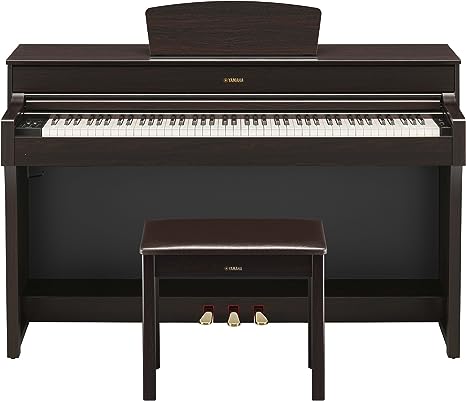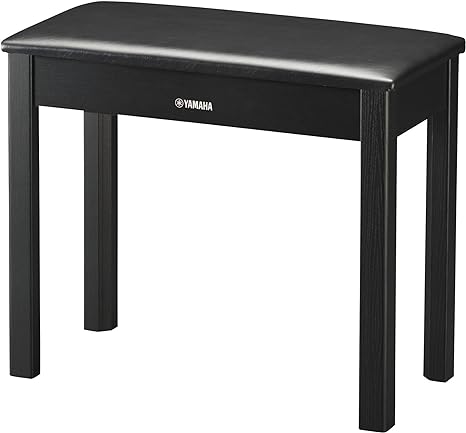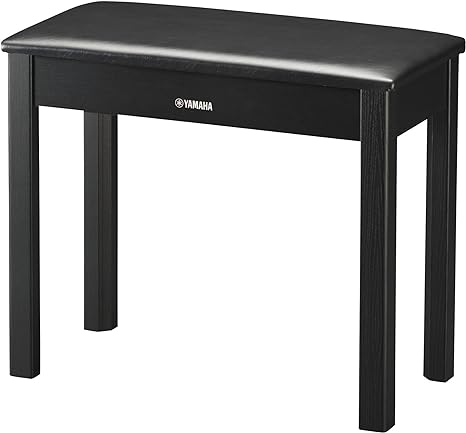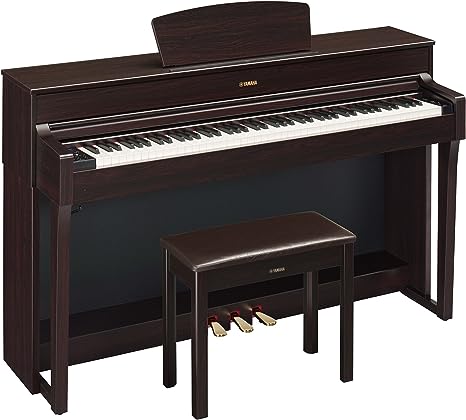Yahama Arius YDP 163 REVIEW
Welcome to our review of the Yahama Arius YDP-163 Digital Piano. The Yamaha Arius series is renowned for offering exceptional sound quality, realistic touch, and a rich playing experience. In this comprehensive review, we will delve into the features, performance, and overall quality of the YDP-163, providing you with valuable insights to help you make an informed decision. Whether you’re a beginner, intermediate, or advanced pianist, join us as we explore the remarkable capabilities and musicality of the Yamaha Arius YDP-163.
The Yamaha Arius YDP-163 Digital Piano is a masterpiece of craftsmanship and innovation, designed to deliver an authentic acoustic piano experience in a compact and modern package. With its meticulously sampled grand piano sounds and graded hammer keyboard action, the YDP-163 ensures a realistic and expressive playing experience that will captivate pianists of all levels.
Equipped with a powerful sound engine and advanced digital features, the YDP-163 offers a wide range of instrument voices, allowing you to explore different sounds and genres beyond the piano. The built-in recording and playback functions enable you to capture and listen back to your performances, perfect for practice sessions and musical development.


Dismembering The Yamaha YDP-163
The Yamaha YDP-163 deserves special attention as it is a digital piano, not merely a keyboard. This distinction is important because a digital piano strives to replicate the touch and tone of an acoustic piano, while a keyboard focuses more on reproducing sounds with variations in touch, weight, size, sound options, and more.
For those new to the world of pianos and seeking a high-quality and potentially expensive instrument, it is crucial to consider these differences and specifications. Visually, the YDP-163 stands out with its authentic piano-like appearance, despite being a digital instrument. Weighing just over 90 lbs., it is remarkably sturdy and can seamlessly blend into any home decor. Available in dark or satin white finishes, the wood grain looks convincingly realistic. In traditional pianos, the harp is situated in the cabinet behind the keys.
The YDP-163 emulates the appearance of an upright piano, with a tall cabinet positioned behind the keys. Unlike grand pianos that rest horizontally, an upright piano stands vertically. The YDP-163 replicates this look with a large upright cabinet attached to two slim feet, which serve as the support for the instrument.
However, what sets it apart is the opening in the middle of the stand, creating a substantial gap. The stand is held together by two wooden panels, and if the digital piano is not placed against a wall, one can see through the gap when viewing the piano from the back.
The sliding key cover is black and conceals the ivory-colored keys, protecting them from dust when not in use. The piano comes with a built-in music stand that matches the black wood grain of the cabinet’s top. Sturdy and reasonably wide, the music stand is ideal for placing sheet music, compositions, and notes at eye level for easy reading during performances.
The Yamaha YDP-163 combines the elegance and charm of an acoustic piano with the convenience and versatility of a digital instrument, making it an excellent choice for pianists of all levels.
2. Suitable for beginners as well as professionals
Although the Yamaha Piano U3 series pianos may be expensive, they are highly durable and of exceptional quality. While some may advise beginners not to invest too much initially, considering the long-term value and superior craftsmanship of the Yamaha Piano U3, it is indeed worthwhile for beginners to purchase them. Starting with a high-quality instrument from the beginning allows for a superior playing experience, as opposed to cheaper pianos that may produce muffled or uncomfortable keys. Investing fully in a piano within your budget is a wise decision.
The Yamaha Piano U3 is not only favored by professional musicians but also ideal in size for home use. It offers the same quality and desired results as a grand piano, making it a top choice among musicians. Esteemed artists like Marcus Dravs and Emeli Sande have purchased and practiced on the Yamaha Piano U3 series, further attesting to its popularity and reputation in the music industry.
YAMAHA U3 DIMENSIONS
The dimensions of the Yamaha Piano U3 are approximately 52 inches in width, 60 inches in height, and 26 inches in depth, or equivalently, 131 centimeters in width, 150 centimeters in height, and 65 centimeters in depth.
PEDALS OF THE YAMAHA ARIUS YDP-163
The accompanying bench for the digital piano is sturdy and comes in a dark finish (or glossy silk white if you prefer that option), with a leather cushion on top. It has three pedals attached to the base, similar to what you would find on a standard upright or grand piano.
For those unfamiliar with the pedals, let me explain briefly. The pedal located on the rightmost side is known as the sustain pedal. When pressed, it releases the dampers from the harp at the back of the piano, allowing the strings to continue ringing even after a key is released. This is why the sound sustains when you hold the pedal down and play a key, and stops when you release the pedal or lift your finger off the key. Since the Yamaha Arius YDP-163 does not have a harp, this sustain effect is digitally simulated.
The pedal on the far left is the soft pedal, also known as una corda. It shifts the hammers so that each one strikes only one string instead of a group of strings. Normally, each hammer strikes multiple strings, producing a loud and bright sound. However, when only one string is struck per key, the sound becomes smoother and darker. This effect is also digitally recreated in the Yamaha Arius YDP-163.
Now, the third pedal in the middle is a bit more confusing. It allows you to selectively sustain certain notes depending on when you play them. You’ll have to experiment with it yourself to understand it fully, but most players typically use the far right and far left pedals.
The keys are weighted to replicate the feel of a real piano, and the YDP-163 excels in this aspect. The keys feel excellent and provide a sense of authenticity that other keyboards may lack.
Yamaha refers to their key technology as Graded Hammer 3 style, which means each key has three sensors that can detect volume and speed accurately. The GH3 sensor technology imitates the action of a grand piano, rather than an upright piano. Thanks to this technology, you can play this digital piano softly or loudly with ease.
The Arius digital piano has 88 keys, giving every type of player access to the full range. Whether you’re into jazz, classical, or popular music, you can enjoy playing every single note on the wide keyboard.
The Yamaha Arius YDP-163 boasts a 192-note polyphony, allowing you to play any song imaginable without notes getting lost in the mix. This is a must-have feature for technical players seeking a high-quality digital piano.
The piano comes with a built-in metronome for practice and a recorder that can capture one song at a time with up to two tracks. While not extravagant, this can be handy for those who want to listen back to their compositions or practice techniques by hearing their own playing.
As expected, there is a master volume knob and a power button. The digital piano requires a power supply of 12W and must be connected to an electrical socket. While it can’t be battery-powered, it will power off on its own if left untouched for an extended period.
HOW CAN IT SOUND?
The YDP-163 may resemble an upright piano, but its true intention is to replicate the sound of a grand piano. The sampled sounds are taken from Yamaha’s CF3S concert grand, a nine-foot-long piano, to recreate the immense, rich, and warm tones.
Due to the dense nature of these tones, using the sustain pedal requires finesse. Holding the pedal down for too many notes will quickly blur everything together. If that’s the desired sound, then go for it, but if not, it’s important to be precise in pedal usage.
Another notable feature of the Yamaha Arius YDP-163 (and the YDP-143, for that matter) is its compatibility with Yamaha’s digital piano controller app. This app allows you to experiment with various sounds. While it may not offer a wide array of options like a synthesizer, it expands the instrument’s capabilities, which is a nice addition. The app provides parameters such as pitch, effects, and tuning, and you can connect to it via Bluetooth or a cable.
The Yamaha YDP-163’s library includes ten preset voices, featuring standard electric piano sounds, organs, strings, and more. However, the primary investment in this digital piano is for its authentic piano sound, not the additional voices. The extra sounds are not ideal for performance or recording purposes due to limitations in sound customization. Typically, with Yamaha keyboards and digital pianos, you can layer multiple voices to combine sounds like strings and piano to create a richer sound.
On the bright side, the stereo speaker system in this digital piano is excellent. It comes equipped with two 20W speakers, providing an optimal volume for home use. Since this digital piano is primarily designed for home use, it is not recommended for performances. Thus, the speaker system should be sufficient for its intended purpose.
Additionally, the Yamaha Arius YDP-163 is equipped with a headphone jack and a USB-to-host input, enabling you to listen privately using headphones or utilize the piano as a MIDI controller, respectively.



Specifications
- It features a full range of 88 keys.
- The keys have the GH3 graded hammer action, providing a sensitive and realistic touch.
- The pure CF Sound Engine is incorporated to deliver high-quality piano sounds.
- The piano comes with three pedals for enhanced control.
- It offers 10 different voices to choose from.
- The instrument boasts a 192-note polyphony, ensuring no notes are lost even during complex performances.
- It supports two-track recording, allowing you to capture your musical ideas.
- The built-in metronome offers a tempo range of 5 to 280 BPM, aiding in practice and timing.
- It includes an earphone jack for private listening and a USB-to-Host connection for versatile connectivity.
- The piano is equipped with a pair of oval-shaped 20W speakers for clear and balanced sound reproduction.
- It comes with a Dad 300C power supply for reliable and consistent power source.


Comparisons to Other Yamaha Arius Piano Models
Yamaha Arius YDP-163 Vs Yamaha Arius YDP-162
When comparing the Yamaha Arius YDP-163 and the Yamaha Arius YDP-162, there are a few key differences to consider. Firstly, the YDP-163 is equipped with the Pure CF Sound Engine, which utilizes high-quality piano samples from the Yamaha CFIIIS concert grand piano. In contrast, the YDP-162 relies on the older AWM stereo sampling technology. Secondly, the YDP-163 features the GH3 (Graded Hammer 3) key action, providing a more realistic touch and feel by replicating the graded weight of an acoustic piano.
The YDP-162, on the other hand, utilizes the GH (Graded Hammer) key action, which may not offer the same level of authenticity. Additionally, the YDP-163 boasts a 192-note polyphony, allowing for more intricate and layered performances without any dropped notes, while the YDP-162 typically has a lower polyphony count, usually around 128 notes. It’s worth noting that there may be further variations in design and finishes between specific models and versions. For the most accurate and up-to-date information, it is recommended to consult official documentation or authorized Yamaha dealers.

Yamaha Arius YDP-163 Vs YDP-181
The Yamaha YDP-181 features a larger LED display and more buttons on its front panel compared to the YDP-163. It offers 14 voice presets, but the sampling technology used is not from the Pure CF Sound Engine, rather utilizing a stereo sampling engine. While it still delivers great sound quality, it is slightly less efficient in comparison to the YDP-163.
Yamaha Arius YDP-163 Vs Yamaha CLP-525
The Yamaha Arius YDP-163 and the Yamaha YDP-S52 differ in design, sound quality, and features. The YDP-163 resembles an upright piano, has the Pure CF Sound Engine, and offers more advanced features. The YDP-S52 is compact, features Pure CF Sampling, and has a streamlined set of features. The choice depends on preferences and specific requirements.
If you’re seeking a digital piano with higher polyphony (256 notes) that closely resembles the YDP-163 and has a similar price range, consider the CLP-525 from the Yamaha Clavinova series. Although it utilizes a CFIII engine instead of the Pure CF Sound Engine, it shares many similarities with the YDP-163.
Is the Ydp-163 Worth the Money?
The Yamaha YDP-163 is generally considered worth the money for several reasons. Firstly, it offers high-quality sound reproduction, thanks to its Pure CF Sound Engine that captures the rich tones of a concert grand piano. The realistic key action provided by the GH3 keyboard adds to the authentic playing experience. Additionally, the YDP-163 includes features like a metronome, recording capabilities, and various voice options, enhancing its versatility for different musical styles and practice sessions. Its solid build quality and aesthetically pleasing design further contribute to its value. However, the worthiness of the YDP-163 ultimately depends on individual preferences, budget, and specific requirements. It is advisable to try it out and compare it with other options before making a final decision.
The Yamaha YDP-163 is priced at approximately two thousand dollars, and considering its value, it is recommended for individuals who are serious about playing the piano and seek exceptional sound quality. Beginners and casual hobbyists may find more affordable options like the Casio PX-860 more suitable. If you have the financial means and the dedication to play the piano, purchasing the YDP-163 is definitely worth it.
That being said, the YDP-163 occupies a favorable position in the Arius line. It features the best keyboard available in the YDP series, a sufficient amount of polyphony, and other appealing features. The YDP-181, which has been on the market for some time, doesn’t seem worth the additional cost anymore, and the YDP-143 is also decent but lacks the upgraded action. If you’re considering instruments within that price range, the YDP-163 is a good choice, but it’s advisable to personally experience it before making a final decision.
